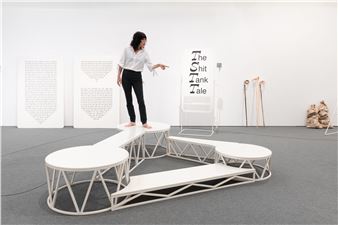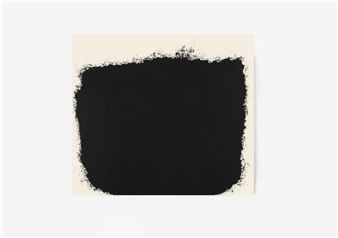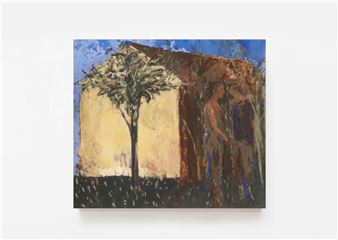Something More Than a Succession of Notes
Ada Magazine, William Anastasi, Amar Foundation, Willem Boshoff, Ian Carr-Harris, Alice De Mont, Ruy Guerra, Johnny Kit Elswa, Shirley, Douglas and Tam Krenak, Violaine Lochu, Ignazio Macchiarella, Pénélope Patrix, Taller Leñateros, Andrew Norman Wilson
In 2003, UNESCO established a Convention for the Safeguarding of the Intangible Cultural Heritage, offering unprecedented institutional recognition of practices in the order of know-how, oral traditions, gestures, or ritual. According to this convention, the notion of “intangible cultural heritage” designates the “practices, representations, expressions, knowledge, skills - as well as the instruments, objects, artefacts and cultural spaces associated therewith” - transmitted from generation to generation by a community. These practices exist in states of permanent recreation in measure with the interaction of the group with its milieu, its history, and provide “a sense of identity and continuity, thus promoting respect for cultural diversity and human creativity”. This convention testifies to the evolution of the concept of “heritage” towards a broader definition, no longer strictly monumental and western. Beyond monuments, objects and texts, this concept now includes oral traditions and gestures, recognizing the diversity of forms of cultural expression throughout the world. The ambition to assure their preservation, however, poses difficulties. How to envisage the representation of practices that are intangible? How to undertake their “safeguarding” without freezing them within an inventory, and reducing them to a transcription or a reactivation necessarily partial and subjective? Should we finally “conserve” these intangible practices, or give free reign to their mutations?
On the occasion of the tenth anniversary of this convention, the exhibition Something More Than a Succession of Notes1 proposes an interrogation of the concerns raised by the patrimonialization of cultural good that are by definition living and in perpetual evolution. Attempting to classify and perpetuate intangible cultural practices, is this not to go against the grain of the organic movement which underlines them, proper to the constitution, to the evolution, and the disappearance of expressive forms belonging to a human community? In as much as the products, knowledge and rituals of a group are always born and transformed in accordance with a precise socio-economic context, their concretization in a timeless form supposed to be representative (by means of sound recordings, photographs and videos, as well as testimonials and elements collected in the field), cannot take full account of their variations and their strong ability to change.
Ada Magazine, William Anastasi, Amar Foundation, Willem Boshoff, Ian Carr-Harris, Alice De Mont, Ruy Guerra, Johnny Kit Elswa, Shirley, Douglas and Tam Krenak, Violaine Lochu, Ignazio Macchiarella, Pénélope Patrix, Taller Leñateros, Andrew Norman Wilson
In 2003, UNESCO established a Convention for the Safeguarding of the Intangible Cultural Heritage, offering unprecedented institutional recognition of practices in the order of know-how, oral traditions, gestures, or ritual. According to this convention, the notion of “intangible cultural heritage” designates the “practices, representations, expressions, knowledge, skills - as well as the instruments, objects, artefacts and cultural spaces associated therewith” - transmitted from generation to generation by a community. These practices exist in states of permanent recreation in measure with the interaction of the group with its milieu, its history, and provide “a sense of identity and continuity, thus promoting respect for cultural diversity and human creativity”. This convention testifies to the evolution of the concept of “heritage” towards a broader definition, no longer strictly monumental and western. Beyond monuments, objects and texts, this concept now includes oral traditions and gestures, recognizing the diversity of forms of cultural expression throughout the world. The ambition to assure their preservation, however, poses difficulties. How to envisage the representation of practices that are intangible? How to undertake their “safeguarding” without freezing them within an inventory, and reducing them to a transcription or a reactivation necessarily partial and subjective? Should we finally “conserve” these intangible practices, or give free reign to their mutations?
On the occasion of the tenth anniversary of this convention, the exhibition Something More Than a Succession of Notes1 proposes an interrogation of the concerns raised by the patrimonialization of cultural good that are by definition living and in perpetual evolution. Attempting to classify and perpetuate intangible cultural practices, is this not to go against the grain of the organic movement which underlines them, proper to the constitution, to the evolution, and the disappearance of expressive forms belonging to a human community? In as much as the products, knowledge and rituals of a group are always born and transformed in accordance with a precise socio-economic context, their concretization in a timeless form supposed to be representative (by means of sound recordings, photographs and videos, as well as testimonials and elements collected in the field), cannot take full account of their variations and their strong ability to change.
Artists on show
Contact details


 ARTISTS
ARTISTS










